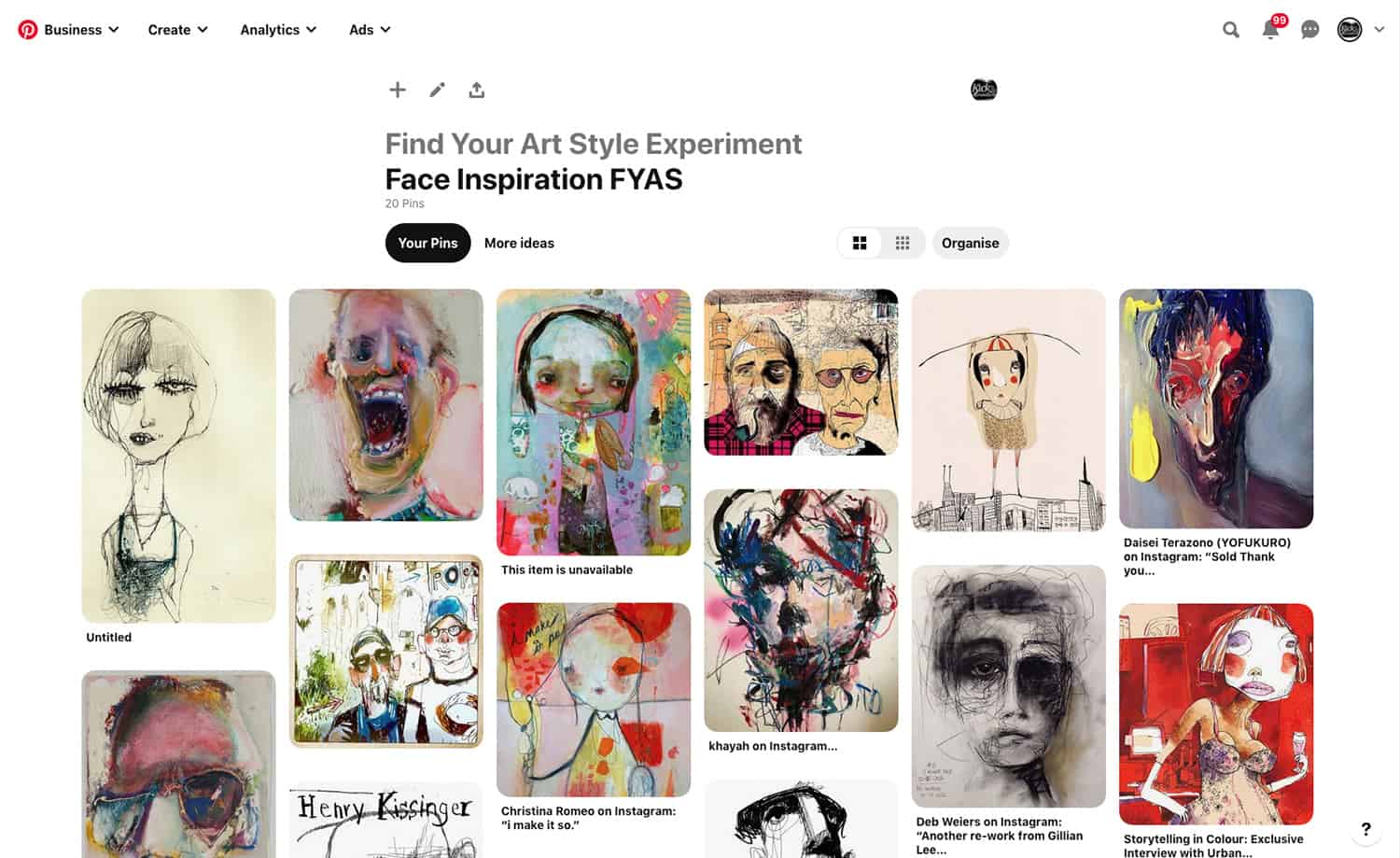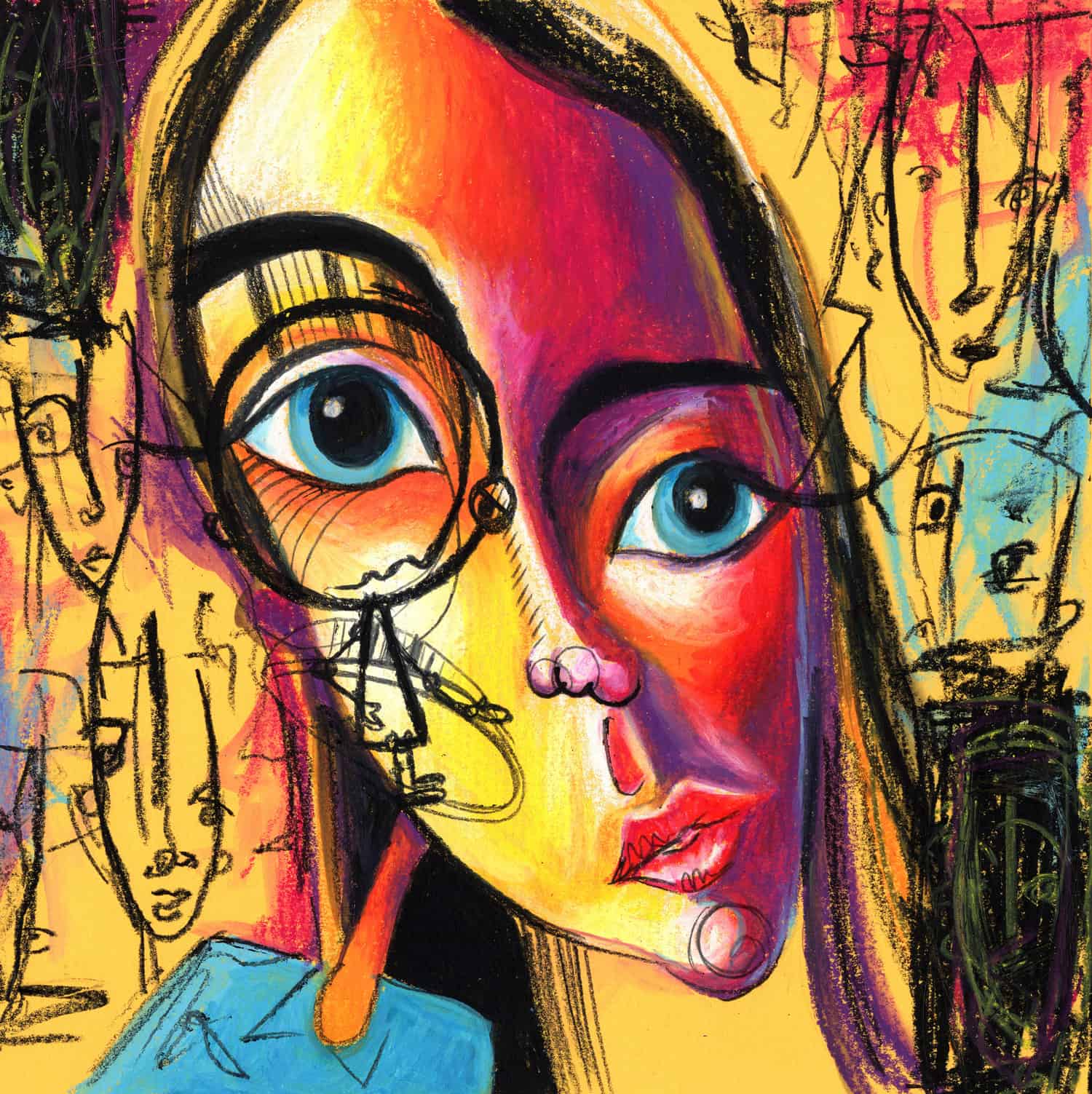Easy Ways to Develop Am Art Style
You've heard artists talk about finding their art style, but what exactly is a signature style and how do you go about finding yours?
Everyone has slightly different ideas about what an art style is. In its simplest form, it's the recognizable way that you paint or draw — a way that tells the viewers that a piece of art is yours. It's your artistic fingerprint.
Your style can consist of the subjects you draw, whether you draw realistically, abstractly or something in between. It can also be about your mark-making, the medium and color palette you use and what message (if any) you convey with your art.
A 60-Day Experiment
I was tired of hearing that style was this mysterious thing that would appear after years of making art. I knew it didn't need to be quite so obscure, so I made a plan to find my signature style.
I crafted a 60-day experiment to discover my style. With a conscious effort, would I be able to create art that I love —and that is recognizably mine?
Playlist: Find Your Art Style Experiment
I began by collecting imagery from artists I admired and analyzing what I liked about them. I then organized pieces of my own work and repeated the process. Simultaneously, I read articles and took courses on finding my art style.
But the key thing I did beyond this was making a lot of art.
There were times when I felt frustrated as I seemed to be moving backwards and creating bad art rather than progressing. There was also a fight going on in my mind. A battle between the semi-abstract faces I should have been focusing on with the weird characters that kept appearing in my sketchbooks. But with some persistence, I broke through.
Challenge yourself to follow these 14 rules and discover your signature style. You may surprise yourself.
How to Find Your Art Style
1. Make a lot of art
One of the keys to finding your style is to make a lot of art. It's only through creating a lot of work that you can hone your skills and work out what makes you tick.
The key to making a lot of art is to find ways to stay motivated. This could be from setting a specific time aside each day to create, to promising yourself a reward when you've filled up your sketchbook.
Make it easier for yourself to create art too. If you can, leave your art materials out in your art space or put a sketchbook near where you sit and watch TV. The less resistance you have, the better.
2. Experiment
Don't be afraid to experiment with your art and widen your experience before narrowing your focus.
You may have dismissed something that could turn out to be the thing you love. Just because you used to love painting buildings in watercolor doesn't mean you will love it now. Tastes change, and that's okay.
Sign up for a course or workshop to further extend your experience. Sometimes a nugget of an idea you learn from a course can kickstart new ways of working you would never have imagined.

3. Analyze your own work
Gather together a collection of your own art. You could do this by creating a Pinterest Board or physically putting it up somewhere. I pinned mine to a notice board.
Grab yourself a notebook and write down what you like about your art. Is there a particular piece you enjoyed creating, do you like the colors or the way you have used line work? These little clues can be developed to form part of your future art style.

4. Narrow your focus
Once you have spent some time experimenting with your art, it's time to narrow your focus. Decide what you think could be "Your Thing." This could be that you are going to focus on landscape painting, abstracts or animals or it could be to focus on a particular medium.
At this point, it can be really useful to set yourself a creative challenge or join an existing one that fits with your objectives. State that you are going to do "Your Thing" for 30 days.
After the 30 days reevaluate and then continue, or if it's not working out set yourself a new challenge. I never would have realized how much I liked drawing faces until I took part in a face drawing challenge.
5. Gather work from artists who inspire you
Gather together work from artists who inspire you and create a Pinterest board of up to 20 pieces of your favorite art. When you choose your influences, make sure it's work that relates in some way to the type of work you want to create. If you love working in oils, don't pick the work of a watercolorist you love unless it's for their color palette or something that could inspire your own work.
I was inspired by Jonathan Twingley , who I discovered through Sketchbook Skool. He creates a mass of drawings and then cuts them out and reassembles them.

6. Take elements you like
Just like you analyzed your own work, do the same with your favorite artists. What is it you like about their work? Is it crisp and clean or dark and moody? Does it use outlines or is it soft with shapes that melt into one another.
Write down the elements that you like about each piece and think how you could incorporate some into your own work. This doesn't mean literally copying them, though some people like to do this as an exercise. Instead, it means taking ideas from several different sources and combining them into your own work.
7. Allow yourself to pivot
Pivoting is talked about in the business world, but it's important in the art world too. To pivot simply means to adjust direction if something is not working out.
So maybe you started out drawing landscapes but then realized what appealed most to you was the water and reflections. Allow this to become your new focus if it feels right. However, don't constantly switch otherwise you will never achieve the focus you need to find your art style.
In my experiment, I was creating abstract faces, but was getting frustrated as little characters kept appearing in my sketchbook. It felt like these were my two passions, but they wanted to compete with each other. Eventually, I had the idea that the two could be combined.

8. Give yourself time
You can speed up finding your art style by following these rules, but each person will have their own timeline depending on the time they have available.
Don't beat yourself up if after a couple of months you haven't found your style. You will be much further ahead than someone who hasn't put focused energy into it,
9. Create the way you love, not how you feel you should
It's easy to fall down the rabbit hole of creating what you think other people will like or buy, but if you don't enjoy it, it's really not worth it.
Don't feel like you have to use certain mediums either because that's how "proper artists" create. I had a hang-up that I needed to use paint when I've always been drawn to dry media. In the end, I realized that I had to create in the manner that feels right to me.
10. Hold yourself accountable
If you are serious about finding your style you need to put the work in. I mentioned before how useful creative challenges can be, but also consider joining art groups, either local or The Skoolyard.
Tell people in the group about the projects you are working on and what they involve. Also, think about finding an accountability partner. This could be an arty friend who is trying to do something similar. Check in with them regularly, let them know how you've progressed and vice versa.
11. Be open to criticism, but be prepared to reject it
Criticism from others can be really useful, especially if they are further ahead of you in their art journey. They may quickly be able to spot where your painting isn't quite working. However, it's important to also reject criticism.
Just because one person doesn't like what you have created doesn't mean someone else won't love it. That's part of the beauty of art.
12. Re-analyze your work
As you progress, look back through your latest work like a scientist. What's working and what did you enjoy?
Decide on your next step. As I worked through my experiment each week I would look back on what I had created and decide what I should work on the following week.
13. Continue or rinse and repeat
An art style is constantly evolving. Even when you have reached a point that you feel your work looks distinctively yours, you will still feel a need to push it slightly in different directions. This doesn't necessarily mean a huge change, but just tweaks and mini-experiments.
If you feel like you have gone off course, it might be necessary to repeat the process and go back through the guide, until you feel more comfortable with what you are creating.
14. Enjoy the process
One of the most important elements to finding your art style is to enjoy the process. The more you enjoy it the more you'll want to create more which will push you forward towards your goal.
With a little focus and conscious effort, you will find your signature style. What you may not realize is that you're already part of the way there! Keep working and develop the style you love.
ABOUT: Tara Roskell is a graphic designer/artist who rediscovered her love of drawing by hand a few years ago after taking part in creative challenges. Along with artist friend Sandra Busby, she co-created Kick in the Creatives , a Website, Podcast and Facebook Group encouraging others to be creative by taking part in creative challenges.
Source: https://sketchbookskool.com/blog/how-to-find-your-art-style/
0 Response to "Easy Ways to Develop Am Art Style"
Post a Comment